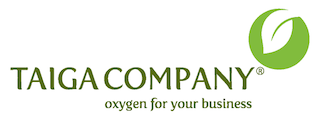How to Maintain A Sustainable Ethos in Your Company’s Production Process

There remain obstacles, even while process manufacturing businesses are definitely engaging in sustainability. Typically, corporate sustainability objectives and efforts are set without any explicit, actionable criteria for plant personnel. However, this doesn’t mean that implementing more sustainable procedures within your business is rendered impossible. If you’re not sure how unsustainable your company is in its present state, it could be a good idea to
calculate your company’s overall carbon footprint
using a free online and thorough calculator so that you are able to accurately identify pressing matters which need to change in your company’s production process. But if you can already pinpoint some issues or simple swaps to make, read on for more inspiration that can help your business take effective steps to a new and improved sustainable state.
Switching To Reusable Absorbents
Switch to an absorbent reuse programme, where absorbents are cleaned for reuse and collected oil is recycled, instead of utilising single-use absorbents for oil drips and spills. You could even implement swaps in the workplace where you might be lacking in reusable shop towels, for instance, which have been proven to improve air quality and reduce waste compared to disposable wipes, making them an overall greener option.
Upgrade And Repair Equipment
On your journey to building an overall sustainable brand , you should be looking to actively upgrade or repair your equipment as needed on a regular basis or rota in order to prevent any potential defects, leaking fluid, and other inefficiencies which may disrupt the regular ongoings of your business. It is also imperative that you try to avoid unnecessary equipment (sought out to meet a “just in case” surge in demand), which ultimately ends up wasting energy in the production process. If this doesn’t necessarily align with your business innerworkings since you’ve transitioned from using physical equipment to adhering to in-built software to communicate with your clients or other business partners, such as utilising an online whiteboard to put in product , you should be actively training your employees on your new processes and procedures. This will help significantly reduce any errors, downtime, and wasted energy
Work With Suppliers
Consult suppliers for better options. Examine the downstream process of your supplier. Collaborate with them to ensure on-time delivery and waste-free packaging solutions. Instruct vendors to ship items on reusable pallets that may be stored for future use. Further, partnering up with a waste-exchange program or material marketplace for your unwanted material can help your business avoid an excessive build-up of waste.
Know The ‘Life Cycle’ Of Your Production Process
The goal of sustainable production is to guarantee that things are produced in a way that conserves resources and protects the environment’s regeneration ability. Sustainable goods ensure that future generations will have access to the natural basis of life. This, in turn, requires a revamped approach to research, design, and production.
The Life Cycle Assessment is a standard tool for SM implementation (LCA). It is a method for thoroughly examining the environmental effect of various human activities, including the corporate production of products and services. LCA may be used to detect environmental impacts resulting from an industrial sector’s actions. LCA may provide a developer with valuable insight into any product, allowing them to find ways to lessen a product’s or process’s environmental effect.


